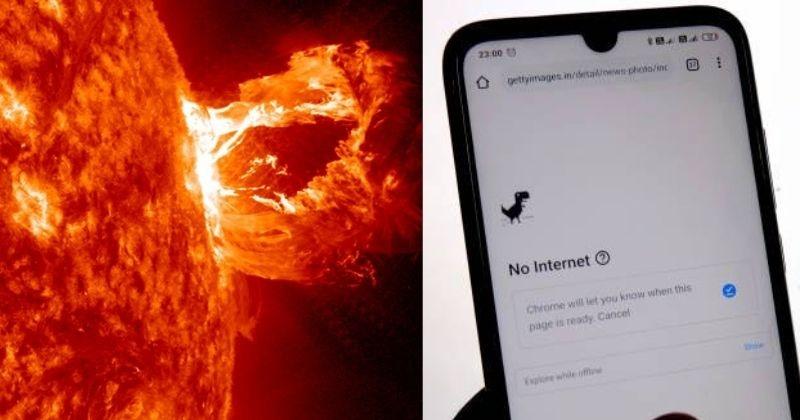New Delhi: In another development over the mysteries of universe, earth is expected to be hit by a solar storm on August 3. It is said that there is a hole in the sun’s atmosphere that is releasing gaseous materials and when it will be combine with incoming stream of solar winds, it has the potential to result in a minor G1 – class solar storm.
National Oceanic and Atmospheric Administration (NOAA) forecasters say there is a slight chance of minor G1 class geomagnetic storms today as Earth enters a high-speed stream of solar wind, reported spaceweather.com. The gaseous material is flowing from a southern hole in the sun’s atmosphere. Meanwhile, a southern hole in the Sun’s atmosphere is releasing some gaseous material. This, combined with a stream of strong solar winds, might result in a minor G1-class solar storm on Wednesday, August 3.
What does G1 Storm mean?
Usually such storms are categorised between G1-G5 level, G1 being the smallest scale. Therefore, G1 solar flares are not that troublesome but G5 become matter of utmost concern. Last G5 storm that hit earth was in sometime in 1859 causing massive destruction of telegraph system and power grid failure.
According to spaceweather.com the G1 flares are relatively harmless. But they could also result in power grid failures, minor disruption in satellite function and impact migratory animals. A more pleasant outcome of these solar storms is the aurora or Northern Lights.
Where will it hit?
Reportedly, auroras are expected colour skies over Canada and Alaska and it might as well a breathtaking moment to watch that horizon of galactic hues. It is after its 11-year solar cycle, that the sun is approaching its peak activity phase and might lead to explosive activities.
At around 2309 UTC last Sunday (4:39 am IST on Monday), Earth-orbiting satellites detected an explosion in the Sun’s northeastern region and a long-lasting eruption of a C9.3-class solar flare.
“The intensity is probably an underestimate because it was partially eclipsed by the edge of the Sun. Nasa’s Solar Dynamics Observatory (SDO) saw hot debris flying away from the blast site,” spaceweather.com stated.
It further added, “The explosion is significant because it may herald an active region set to emerge over the Sun’s northeastern limb later this week. A new sunspot group could bring an end to weeks of relative quiet.”
While the Sun comes up the horizon everyday, it is not a tangible distance. But it also does not mean that activities around this giant ball of fire can never approach earth.





































